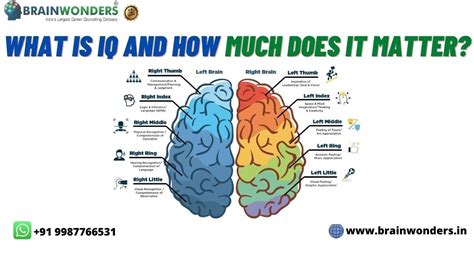An individual’s intelligence quotient (IQ) is considered a crucial indicator of their cognitive abilities. While genetics play a significant role in determining IQ, research suggests that certain brain structures contribute to intelligence. Among these, the cerebrum, the largest part of the brain, takes center stage.

Cerebrum and Intelligence
The cerebrum constitutes approximately 80% of the brain’s mass and is primarily responsible for higher-order cognitive functions. It encompasses two hemispheres, the left and right, each specializing in different aspects of intelligence.
Left Hemisphere:
- Verbal Intelligence: Comprises language comprehension, reading, and writing abilities.
- Analytical Intelligence: Involves logical reasoning, critical thinking, and problem-solving.
Right Hemisphere:
- Spatial Intelligence: Relates to spatial awareness, visual-motor skills, and the perception of objects in three-dimensional space.
- Creativity: Facilitates imaginative thinking, artistic expression, and the generation of new ideas.
Cerebrum Size and IQ
Studies have consistently shown a correlation between cerebrum size and IQ. Individuals with larger cerebrums tend to have higher IQ scores, suggesting that the cerebrum’s physical volume contributes to intelligence.
Cerebrum’s Role in Cognitive Processes
Neuroplasticity: The cerebrum exhibits remarkable neuroplasticity, allowing it to adapt and change throughout life. Learning, experience, and environmental factors can influence its structure and function, thereby impacting intelligence.
Interhemispheric Connectivity: The cerebrum’s two hemispheres communicate extensively via the corpus callosum. Enhanced interhemispheric connectivity has been linked to higher IQ scores, as it facilitates the integration of information from both sides of the brain.
Working Memory: The cerebrum’s prefrontal cortex is involved in working memory, the ability to hold and manipulate information in the mind. A stronger prefrontal cortex is associated with improved IQ performance.
Enhancing Cerebrum Function for IQ Development
While genetics cannot be altered, certain practices and interventions can optimize cerebrum function and support IQ development:
Cognitive Stimulation: Engaging in activities such as reading, solving puzzles, and learning new skills challenges the cerebrum and promotes its growth.
Nutrition: A balanced diet rich in nutrients like omega-3 fatty acids supports brain health and cognitive development.
Physical Exercise: Regular exercise increases blood flow to the cerebrum, enhancing oxygen and nutrient delivery.
Sleep: Adequate sleep allows the cerebrum to consolidate and reinforce memories, vital for learning and intelligence.
Cerebrum as an Innovation Hub
Beyond its role in intelligence, the cerebrum’s vast capacity and interconnectedness make it an extraordinary hub for innovation. By harnessing its capabilities, we can generate novel ideas and enhance our understanding of human cognition.
Tables
Table 1: Cerebrum Structure and Functions
| Structure | Functions |
|---|---|
| Left Hemisphere | Verbal intelligence, analytical intelligence |
| Right Hemisphere | Spatial intelligence, creativity |
| Prefrontal Cortex | Working memory, executive functions |
| Corpus Callosum | Interhemispheric connectivity |
Table 2: Cerebrum Size and IQ Correlations
| Cerebrum Volume | IQ Score |
|---|---|
| Large | High |
| Medium | Average |
| Small | Low |
Table 3: Cerebrum Function Enhancement Practices
| Practice | Benefits |
|---|---|
| Cognitive Stimulation | Challenges the cerebrum, promotes growth |
| Nutrition | Provides essential nutrients for brain health |
| Physical Exercise | Increases blood flow and oxygen delivery |
| Sleep | Consolidates and reinforces memories |
Table 4: Cerebrum’s Role in Innovation
| Capability | Applications |
|---|---|
| Vast Capacity | Idea generation, problem-solving |
| Interconnectedness | Integrating diverse perspectives, synthesizing information |
| Plasticity | Adapting to changing environments, learning from experiences |
